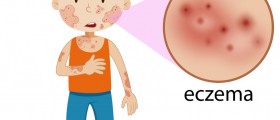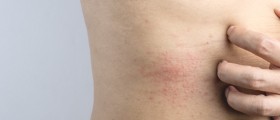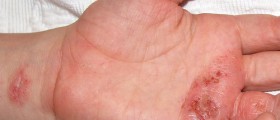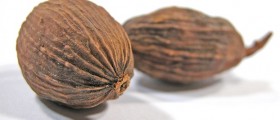
Dermatitis is a common skin condition, to be more precise skin inflammation affecting people of all ages. As for infants, dermatitis typically occurs in two forms, as infant eczema or atopic dermatitis and as seborrheic dermatitis.
Infant Eczema
Infant eczema (atopic dermatitis) basically affects children between 2 and 6 months of age. The affected skin gets covered with unsightly, itchy rash. Initially the rash is located onto the face while in time it spreads and affects the skin behind the ears, neck, torso and finally all four extremities. The rash may be in a form of small papules and pimples, filled with fluid. They tend to burst and ooze. This condition usually withdraws until the child turns 18 month of age. If not, it generally subsides causing fewer problems.
Atopic dermatitis in infants most commonly occurs in families with a history of allergies as well as hay fever and asthma. There is a variety of potential triggers of skin inflammation. The skin of the child is highly susceptible to some irritants, prone to dryness and gets easily inflamed. Some of many potential triggers of skin inflammation are the presence of moisture (milk, saliva or sweat on the skin), heat, dust, animal dander, irritating fabrics, harsh detergents and soaps etc. Such type of dermatitis may also be associated with food allergies or intolerance.
A well experienced pediatrician will examine the baby and opt for the most suitable treatment. The acute inflammation is generally brought under control with prescribed creams while parents need to pay attention and prevent potential flare-ups. The baby's skin must be kept cool and sweat-free. All food the child is allergic or intolerant to must be eliminated from the diet. The use of harsh detergents and soaps must be restricted, if not eliminated. Avoid irritating fabrics. Finally, after lukewarm baths, the child's skin should be covered with a gentle moisturizer.
Infant Seborrheic Dermatitis
Infant seborrheic dermatitis, also known as cradle cap, is skin inflammation characterized by deep-red bumps and yellow crusty scales as well as flakes that typically develop on the eyebrows, scalp, neck and shoulders. Even though the condition predominantly affects the head, it may be also present in the diaper area.
In the majority of cases cradle cap affects young infants and may linger until they turn 1 year.
Seborrheic dermatitis develops due to excessive production of sebum by the sebaceous glands of the affected area. The condition appears horrible, but it actually does not cause any unbearable symptoms. If parents are bothered or large areas are covered with specific skin changes, they may seek pediatrician's opinion regarding removal of the scales.
Finally, seborrheic dermatitis tends to become worse if the affected area sweats a lot. This is why inflammation can be successfully reduced if the skin is kept cool and dry.
















Your thoughts on this
Loading...